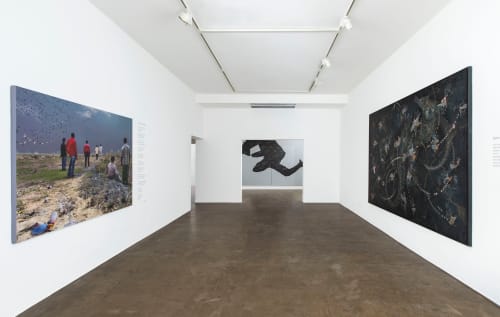The on-set of technology as a development of practical tools often through scientific measures and industrial impact, circles much further back than the zeitgeist’s limiting conversation of technology in and of the digital ether. The origins of oil painting are dated to the 7th century CE; the first photograph was taken with a camera obscura in the 19th century; and scholars believe that the first practice of writing developed in ancient Mesopotamia around 3500 BC, almost 5500 years ago. The progressive invention of material and script have served as technological advances in their own right, not only shaping the form and function of artistic enterprises but also discoursing the role of the artist–writer–creator for centuries.
In spite of the tactility of etymological definitions of technology, today’s apprehension takes on a more cybernated character. The changing nature of creation and consumption are prompting fundamental shifts in our thinking selves, and practices that were once at the helm of human progress have taken on a nostalgic aura. The labor of thinking and making must be re-centered in concentration – on purpose.
Ekphrasis refers to the rhetoric construction and interpretation of a visual impression, object or scene in the form of the written word. Often vivid and dramatic, ekphrastic writing offers detailed descriptions of forms of art either real or imagined, and in a more nuanced sense, connects personal ideology with collective structures. From the emotionally resonant, tumultuous reading of Van Gogh’s most famous painting in Anne Sexton’s ‘Starry, Starry Night’ to a philosophically curious yet descriptive meditation of one of Parmigianino’s self-portraits in John Ashbery’s ‘Self-Portrait in a Convex Mirror’, literature has long-turned upon the arts as an inquiry of the beautiful and the sacred in trying to decipher the perplexities of the human condition through our relationships with and representations of the world.
Our group exhibition titled On Purpose featuring large-scale artworks by some of the most exciting names in contemporary Indian art, including Anju Dodiya, Sunil Gupta, N.S. Harsha, Sudhir Patwardhan and Ranbir Kaleka, among others, posits an ekphrastic challenge to a diverse group of young writers with cultural influence, and experiments with cognitive ideas of ‘reading’ and ‘seeing’ artworks in a gallery space.
